At first, it is all darkness.
Then light. Karina Torres wakes up. She hears the voice of her friend calling out but she can’t move or respond. She is pressed against the inside of a car door, her right hand braced down into the seat next to her. Broken glass covers everything like glitter.
Then darkness.
Then light. An EMT is standing over her. Karina screams out in pain, “My back! My back!”
Then darkness.
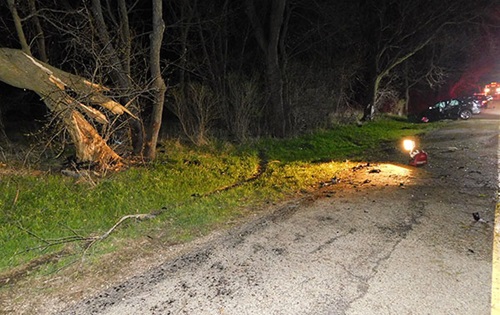 Then light. Karina is in the back of an ambulance. The EMT struggles to find a vein in her arm to place the IV. Karina feels a strange sense of serenity. No fear, just calm confusion. And concern for what her parents would be going through.
Then light. Karina is in the back of an ambulance. The EMT struggles to find a vein in her arm to place the IV. Karina feels a strange sense of serenity. No fear, just calm confusion. And concern for what her parents would be going through.
Then darkness.
Then light. Karina is back outside, wrapped warmly on a stretcher. The wind is stinging her face as a Flight for Life helicopter touches down nearby.
Then darkness.
Then light. Out of the corner of her eye, from high above, Karina sees the Children’s Wisconsin sign glowing blue in the night sky. She looks to the EMT who smiles and gives her a thumbs up.
Then darkness.
Then light. Karina’s mom, dad and sister are standing over her in a hospital room. The pain is unbearable and she’s screaming.
Then darkness.
A tragic detour
 It was April 19, 2019. Good Friday. About two hours earlier, 17-year-old Karina and three of her friends were driving back home from a movie in Lake Geneva and decided to take a detour.
It was April 19, 2019. Good Friday. About two hours earlier, 17-year-old Karina and three of her friends were driving back home from a movie in Lake Geneva and decided to take a detour.
"I never would have imagined what happened to me,” said Karina. “At first, I didn’t have my seatbelt on, but something along the way told me to put it on, so I did.”
Moments later, they were coming upon a curved road and the driver lost control. The car, driving around 45 mph, crashed into a tree.
Miraculously, the other three passengers in the car escaped with minor cuts and bruises — even the boy sitting next to Karina who was thrown from the car walked away with little more than a small bump over his eye. But Karina fractured and dislocated two vertebrae in her lower back and had damage to her spinal cord.
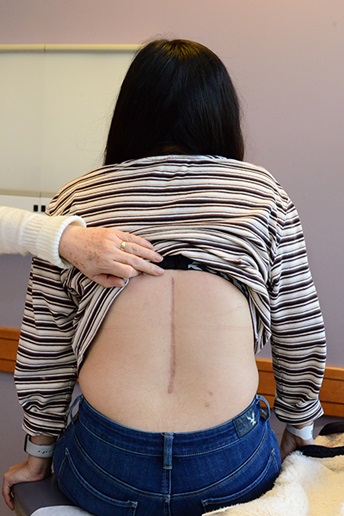 “When she came in, she had profound weakness in both feet,” said Sean Lew, MD, medical director of neurosurgery at Children's Wisconsin. “She was also incontinent, which is pretty ominous. That signifies loss of spinal cord function. It’s scary stuff. Most people who lose that don’t get it back.”
“When she came in, she had profound weakness in both feet,” said Sean Lew, MD, medical director of neurosurgery at Children's Wisconsin. “She was also incontinent, which is pretty ominous. That signifies loss of spinal cord function. It’s scary stuff. Most people who lose that don’t get it back.”
1
That night, Karina was evaluated and stabilized. And early the very next morning, the surgery team, led by Dr. Lew and Channing Tassone, MD, section chief of orthopedics at Children’s Wisconsin, was called into action.
With Dr. Lew primarily concentrating on the spinal cord and Dr. Tassone on the spinal column, the two together performed a nearly five-hour spinal fusion surgery. Through a 12-inch incision along her back, Dr. Tassone realigned Karina’s spine and attached two cobalt chromium rods and eight screws to hold it in place. Meanwhile, Dr. Lew focused on any compression or damage to the spinal cord and other nerve elements.
Comprehensive collaboration
This collaboration between Dr. Tassone and Dr. Lew is part of a greater clinical partnership between our Orthopedics program and Neurosciences Center known as the Comprehensive Spine Program.
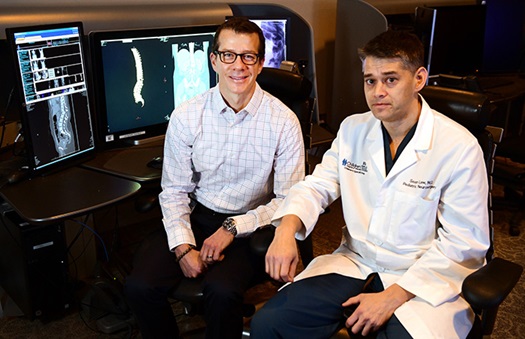 “Dr. Lew and I started at Children’s Wisconsin on the same day. At the time, the program here was actually sending all our spine trauma cases to a different hospital,” said Dr. Tassone. “Dr. Lew and I said, ‘Why are we doing this?’ So that was really the beginning of Dr. Lew and I working with each other, and from there it has really blossomed.”
“Dr. Lew and I started at Children’s Wisconsin on the same day. At the time, the program here was actually sending all our spine trauma cases to a different hospital,” said Dr. Tassone. “Dr. Lew and I said, ‘Why are we doing this?’ So that was really the beginning of Dr. Lew and I working with each other, and from there it has really blossomed.”
Started in 2004, the Comprehensive Spine Program originally focused just on spinal trauma cases. But in the years since, it has become the standard of care for deformities and other congenital spinal issues, such as scoliosis, spinal muscular atrophy and spina bifida. From traumas to congenital issues to neuromuscular disorders to special needs, the four members of the neurosurgery team and three orthopedic spine specialists collaborate on dozens of cases a year.
“We treat the most complicated of the complex spine problems,” said Dr. Tassone.
“It’s not that one of us couldn’t do it alone, but there are certain things that are more common for each of us,” said Dr. Lew. “Our partnership is the ideal situation for our patients.”
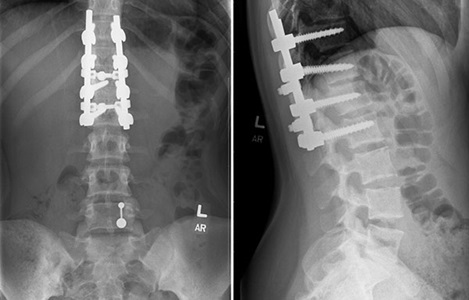 At first, Dr. Tassone didn’t truly appreciate how novel their approach was. He just assumed that everyone worked together everywhere because it was the right thing to do and the best thing for patients. But it’s not common at all. In fact, it’s often exactly the opposite.
At first, Dr. Tassone didn’t truly appreciate how novel their approach was. He just assumed that everyone worked together everywhere because it was the right thing to do and the best thing for patients. But it’s not common at all. In fact, it’s often exactly the opposite.
“At most other hospitals there tends to be much more competitiveness between departments,” said Dr. Tassone. “Here, we just ask what’s best for the patient and do it.”
“We’re unique in that we’re partners and not competitors,” added Dr. Lew.
That cooperation helps ensure the patient comes first and receives the absolute best care possible. It’s the Children’s Wisconsin mission in action.
2
“The staff and doctors at Children's Wisconsin were just amazing,” said Karina. “I'm so glad there are people that love what they do because it shows. If not for doctors like that, I would have felt scared. But I knew I was in good hands.”
The long road to recovery
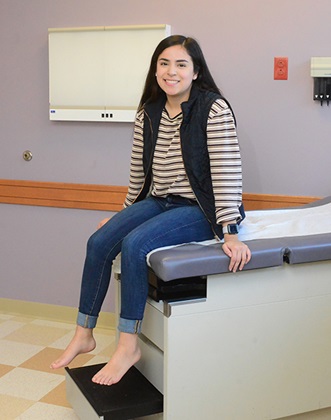
For three months following surgery, Karina had to wear a stiff plastic brace to help limit her movement.
She was recently back for her six-month follow-up X-ray and she is progressing nicely. In the coming years, her vertebrae should continue to grow together and strengthen. She’ll continue to receive therapy to work on her balance, coordination and strength, and in six months she’ll be back for another follow-up X-ray. If everything continues to look good, she’ll move to annual exams.
“She’s very lucky to be walking,” said Dr. Lew. “She’s made a good recovery, but it’s not a complete recovery.”
“I can say I have improved a lot from where I was, and I'm super thankful for the doctors and God,” said Karina. “I feel as if I was reborn, having to learn how to walk. Looking back on everything, I never thought I would be able to do what I can do now. I am super proud of myself and I’m looking forward to building myself up to be stronger.”
Karina still has weakness in her right foot. But she’s not letting it slow her down. Not even six months after the horrific accident, she was back on the soccer field. And aside from potentially being prone to backaches, she should have no other long-term complications.
“The fact that she’s playing soccer again is incredible,” said Dr. Lew. “That didn’t seem possible that Friday night.”







